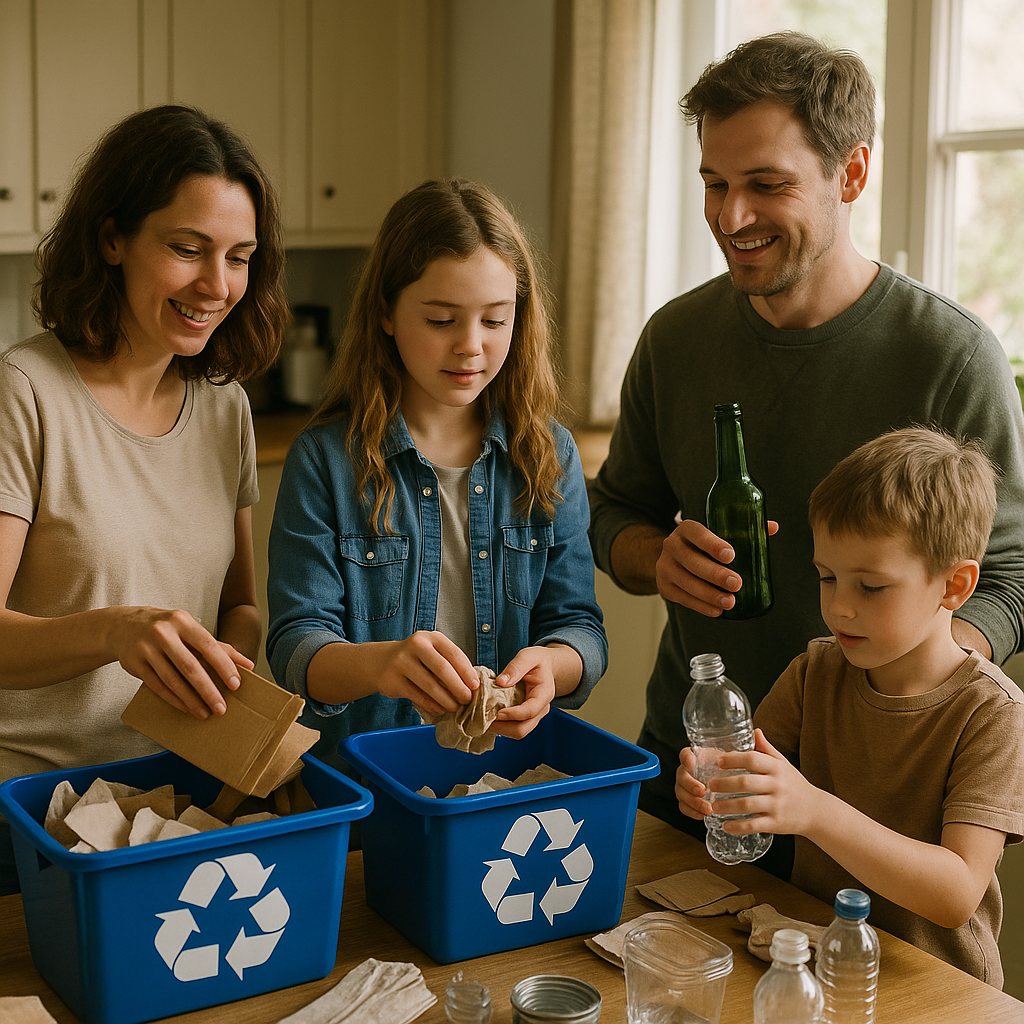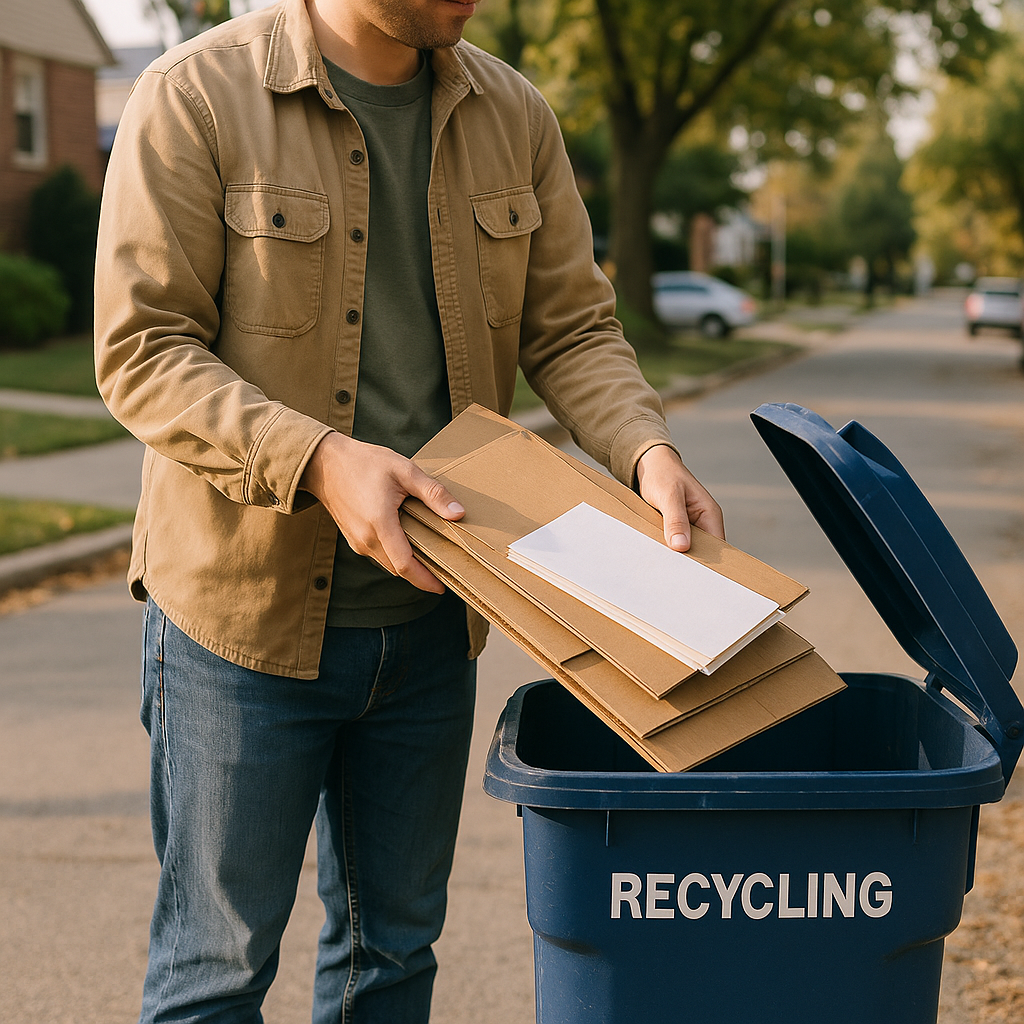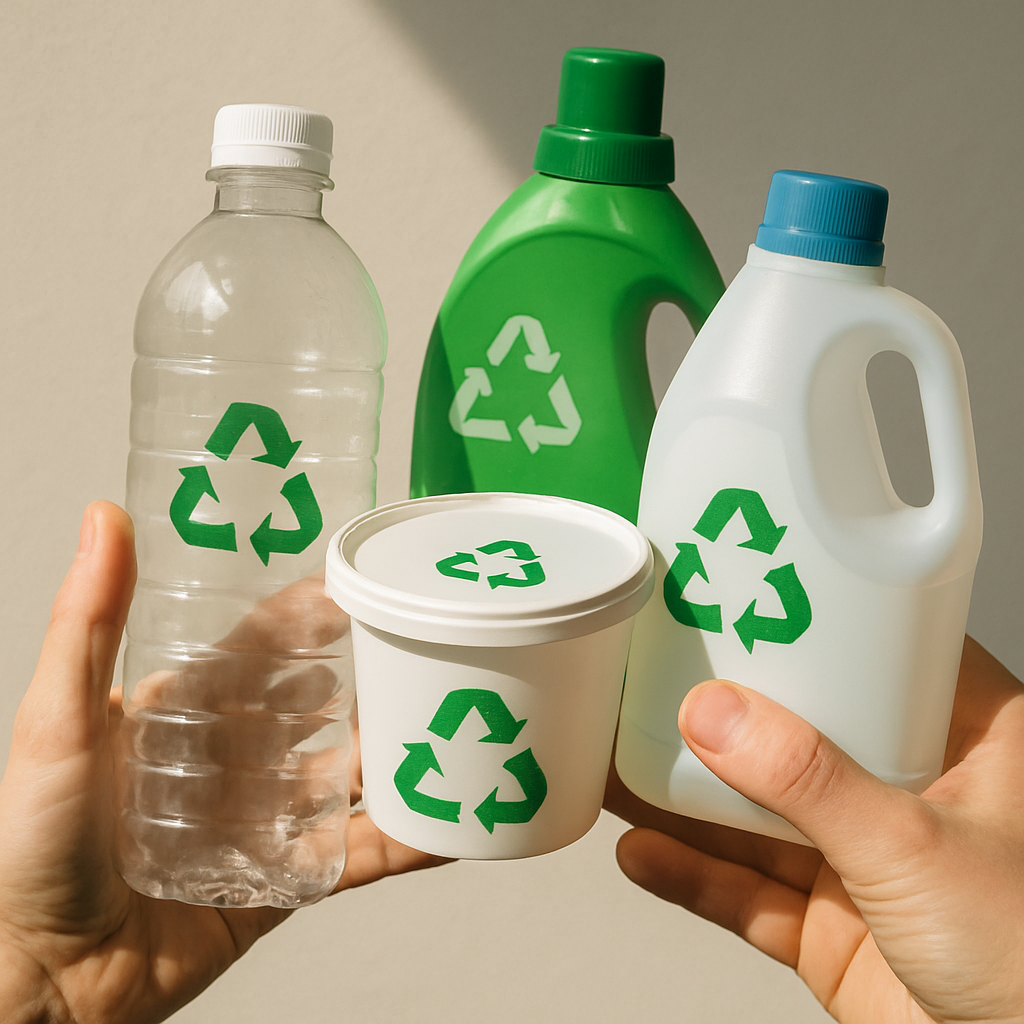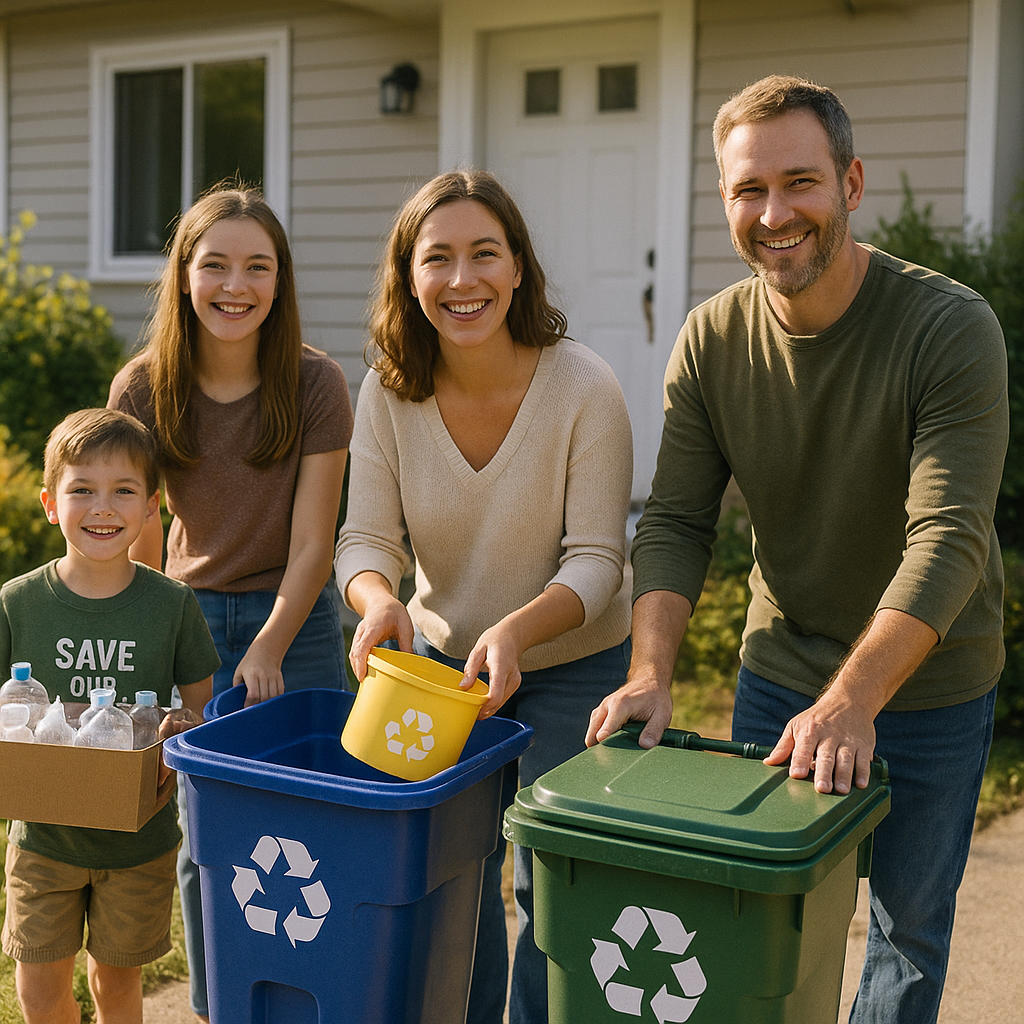5901 Botham Jean Blvd, Dallas, TX 75215
Learn About the Common Household Items That Are Recyclable
August 26, 2025Every day, we use numerous items that can be recycled instead of being sent to landfills. From the newspaper you read with morning coffee to the aluminum can from your afternoon soda, recycling opportunities are present throughout your home. Paper, cardboard, plastic bottles, glass containers, and metal cans are just a few materials that can be given new life through recycling.
The Environmental Protection Agency estimates that about 75% of household waste is actually recyclable, yet many of these items still end up in landfills. By identifying recyclable items in your home, you can significantly contribute to waste reduction efforts. Making recycling a daily habit helps conserve natural resources and energy while reducing pollution.
When we recycle items like cardboard boxes, aluminum cans, and plastic containers, we’re not just clearing clutter from our homes. We are contributing to a crucial environmental solution that protects our planet for future generations. Simply placing these items in recycling bins instead of trash cans creates a ripple effect of positive environmental impact.
What are the basic rules for recycling household items?

Effective recycling begins with understanding a few key guidelines. By adhering to these steps, we greatly reduce contamination in recycling streams, ensuring more materials are recycled instead of going to landfills.
The Three Basic Recycling Rules
- Recycle only bottles, cans, paper, and cardboard – Focus on these core materials that processing facilities handle effectively. These items are the backbone of most municipal recycling programs.
- Keep food and liquid out of your recycling – Even minimal food residue or liquid can contaminate an entire batch. A single dirty container can ruin a whole truckload of recyclables.
- Avoid placing loose plastic bags or bagged recyclables in bins – Plastic bags can jam sorting equipment, causing shutdowns and posing safety risks. Always put recyclables loose in the bin.
Proper Preparation of Recyclables
To prevent contamination, follow these steps before recycling items:
Rinse containers to remove food residue. A quick rinse with leftover dishwater suffices; there’s no need for thorough scrubbing. This helps keep recyclable materials viable.
Ensure items are dry before recycling. Wet paper and cardboard can degrade during transport and processing, becoming non-recyclable. Moisture also encourages mold growth, further contaminating materials.
Common Contamination Culprits to Avoid
Avoid placing these items in your recycling bin:
- Greasy pizza boxes (tear off and recycle clean sections only)
- Food-soiled containers that can’t be cleaned
- Plastic film, wrapping, and flexible packaging
- Disposable cups with wax or plastic coatings
- Disposable diapers, tissues, and paper towels
When unsure if an item is recyclable, it’s best to throw it away. “Wishcycling” – putting questionable items in recycling with the hope they are recyclable – causes more harm than good by contaminating materials.
Adhering to these recycling rules ensures more materials are successfully processed and renewed.
| Material | Recyclability | Preparation Instructions |
|---|---|---|
| Plastic Bottles | Recyclable | Rinse, caps on/off per local rules |
| Cardboard | Recyclable | Remove non-cardboard materials, flatten |
| Paper | Recyclable | Ensure clean and dry, shred if accepted |
| Aluminum Cans | Recyclable | Rinse, do not crush |
| Glass Bottles | Recyclable | Rinse, remove caps |
| Plastic Bags | Not in bin | Return to store drop-off locations |
How do I recycle paper and cardboard products?

Paper and cardboard are among the most recyclable materials. In 2018, Americans recycled about 68 percent of the paper they used, making it the most recycled material in municipal solid waste. This high recycling rate helps save trees, reduces landfill use, and conserves valuable resources.
Most paper and cardboard items encountered daily can be recycled through standard curbside recycling programs. Recyclable paper products include newspapers, magazines, catalogs, office paper, mail (even envelopes with plastic windows), paper bags, paperboard boxes, and cardboard packaging.
Preparing Cardboard for Recycling
Proper preparation of cardboard is essential for efficient recycling. Start by removing any non-cardboard materials such as plastic packaging, foam inserts, or tape. Break down all boxes by opening the bottom flaps and flattening them completely. This step saves significant space in recycling bins and makes collection more efficient.
For large cardboard boxes, consider cutting them into smaller, more manageable pieces. This not only makes them easier to handle but also ensures they fit properly in recycling bins. Stacking flattened cardboard neatly maximizes space and improves collection efficiency.
Handling Food-Contaminated Paper Products
While clean paper and cardboard are easily recyclable, items with food residue require special consideration. Contrary to common belief, pizza boxes can typically be recycled even with some grease stains. However, if a box is heavily soiled with cheese, oil, or food remnants, tear off and discard the contaminated portions while recycling the clean sections.
Paper napkins, paper towels, and tissues cannot be recycled regardless of their condition. These items have fibers that are too short for recycling and should be placed in regular trash or composted if your municipality offers this service.
Special Considerations for Certain Paper Items
Shredded paper presents unique recycling challenges. Many recycling facilities cannot process it properly because the small pieces can jam equipment or become mixed with glass fragments. Check with your local recycling program for specific guidelines – some may accept shredded paper in paper bags, while others might require it to be taken to special collection points.
For paperback books, most recycling programs accept them as-is. Hardcover books require removal of the hard cover before the pages can be recycled. Consider donating books in good condition to schools, libraries, or charitable organizations before recycling them.
Gift wrap is another tricky item. Standard paper gift wrap is usually recyclable, but wrapping paper with metallic finishes, glitter, or plastic coatings typically cannot be recycled. Consider reusing gift bags and boxes or using more sustainable wrapping alternatives like newspaper or kraft paper.
| Recyclable Item | Preparation Guidelines | Notes |
|---|---|---|
| Cardboard Boxes | Remove any packing materials; flatten boxes. | Check local guidelines for specific instructions. |
| Newspapers & Magazines | Include with other paper products. | Ensure they are dry and free of non-paper items. |
| Office Paper | Mix with other clean paper; avoid shredding, if possible. | Place shredded paper in paper bags if allowed locally. |
| Paperboard | Remove plastic coatings and flatten. | Ensure it is free from food contamination. |
| Pizza Boxes | Recycle clean portions only; discard greasy parts. | Heavily soiled boxes should be discarded. |
| Gift Wrap | Avoid metallic or glitter finishes. | Standard paper wrap is usually recyclable. |
The Recycling Process
Once collected, paper and cardboard undergo a thorough recycling process. Materials are sorted by type, shredded, and mixed with water to create a pulp. Contaminants like plastic and staples are filtered out, and the pulp is de-inked before being pressed into sheets and dried to create new paper products.
Each time paper is recycled, its fibers become shorter and weaker. This means paper can typically be recycled five to seven times before the fibers become too degraded to use, making your recycling efforts crucial for extending the useful life of these materials.
Remember that recycling requirements may vary by location, so always check with your local recycling program for specific guidelines. By taking a few simple steps to properly prepare your paper and cardboard for recycling, you contribute significantly to sustainability and resource conservation.
What types of plastic can be recycled?

Not all plastics are equal in terms of recycling potential. Knowing which types can be processed by your local recycling program is crucial for effective waste management. The key to identifying recyclable plastics lies in the Resin Identification Code (RIC)—those small numbered triangles stamped on plastic items.
These codes, ranging from 1 to 7, help identify the type of plastic resin used in a product. They were developed in 1988 to facilitate waste collection and sorting. While a code’s presence doesn’t ensure recyclability locally, it provides valuable information about the material composition.
Common Recyclable Plastics
PET (Code 1): Polyethylene terephthalate is one of the most widely recycled plastics globally. It is found in water bottles, soda containers, and many food packaging items. Its clear appearance and high recycling market value make it a priority for recycling facilities.
HDPE (Code 2): High-density polyethylene is used for milk jugs, cleaning product bottles, and shampoo containers. This durable plastic has excellent recycling potential and can be reprocessed up to 10 times when cleaned and sorted properly.
PP (Code 5): Polypropylene appears in yogurt containers, margarine tubs, and takeout boxes. While acceptance of this material varies by location, more communities now accept it.
Challenging Plastics for Recycling
PVC (Code 3): Polyvinyl chloride is difficult to recycle and rarely accepted in curbside programs. It is found in plumbing pipes, garden hoses, and some food packaging. PVC contains chlorine, which can release harmful chemicals during processing.
LDPE (Code 4): Low-density polyethylene includes plastic bags, bread bags, and other soft plastics. Though recyclable, these materials require special handling as they can jam standard recycling equipment. Many grocery stores offer collection points for these items.
PS (Code 6): Polystyrene, often known as Styrofoam, has limited recycling options. Foam containers, disposable cutlery, and coffee cups made from this material typically require specialized recycling programs.
Other (Code 7): This catch-all category includes mixed plastics, bioplastics, and materials like polycarbonate. Recycling options vary widely and often need specialized facilities.
How to Determine Recyclability
First, check your local recycling guidelines. Rules differ significantly between communities based on available processing facilities and market conditions. Most municipal programs accept codes 1 and 2, with many now taking code 5 as well.
Clean your recyclables before disposal. Food residue can contaminate entire batches of recycled material. For bottles with caps, check local requirements—some programs want caps on, others prefer them removed.
Avoid placing plastic bags, wraps, or foam in curbside bins unless explicitly permitted. These materials require special handling through store drop-off programs or specialized recycling centers.
Remember that darker colored plastics have lower recycling value than clear or natural ones. This is because colored plastic can only be recycled into darker products, limiting its reuse potential.
By understanding plastic resin codes and following local guidelines, you can significantly improve the effectiveness of plastic recycling efforts and help reduce environmental contamination.
| Plastic Type | Code | Common Applications |
|---|---|---|
| PET | 1 | Water bottles, soda containers, food packaging items |
| HDPE | 2 | Milk jugs, cleaning product bottles, shampoo containers |
| PVC | 3 | Plumbing pipes, garden hoses, some food packaging |
| LDPE | 4 | Plastic bags, bread bags, soft plastics |
| PP | 5 | Yogurt containers, margarine tubs, takeout boxes |
| PS | 6 | Foam containers, disposable cutlery, coffee cups |
| Other | 7 | Mixed plastics, bioplastics, polycarbonate |
Conclusion: Making household recycling a habit

Establishing a consistent recycling routine is among the most impactful environmental actions you can take at home. By diverting materials from landfills, you actively reduce greenhouse gas emissions and conserve natural resources. Properly sorting recyclables creates a ripple effect that extends beyond your household.
Successful recycling starts with understanding your local program requirements. Regulations vary between communities, affecting which materials are accepted and how they should be prepared. Visit your city or county website to learn about guidelines for your area. Making recycling convenient by placing bins strategically throughout your home can transform it into a natural part of your daily routine. Remember, consistent small actions build lasting environmental habits.
For expert guidance on effective recycling systems or to learn more about sustainable waste management solutions for your household, contact Okon Recycling at 214-717-4083.
